Most people are focused just on the saving part of retirement planning—and don’t get us wrong, it’s a great place to start. But there’s even more you should do to make sure your savings will support the way in which you want to live out your golden years.
Here are some of the basics of retirement planning.
Learn about the easiest ways to save
Let’s first talk about the two most common types of retirement savings programs.
- 401(k): This employer-sponsored retirement savings plan offers a lot of benefits. With a Traditional 401(k), you have a percentage of your income taken pre-tax from each paycheck and invested, which reduces your taxable income and saves you money. Many employers also match a percentage of those contributions, which adds ‘free’ money to your account. Because you contributed the money before tax, your contributions, the company match, and their earnings will be taxed when you take the money out during retirement, but that’s typically when you’re in a lower tax bracket. Your employer may also offer a Roth 401(K), where your initial contributions are not tax deductible. However, when you take qualified withdrawals during retirement, the money you contributed, and the earnings, will all be tax free.
- IRA: An Individual Retirement Account is available to anyone, not just through your employer. The most popular IRAs are Traditional and Roth. The two differ in how your money is taxed. Once you’ve set up a Traditional IRA, you can contribute pre-tax dollars, and your money grows tax deferred, but then is taxed when you withdraw it during retirement. With a Roth IRA, you contribute money after it’s been taxed, but your earnings grow tax free, and your withdrawals are tax free as well.
Some people get confused about this, but you can make contributions to both an IRA and a 401(k) in the same year.
Start saving early
When you’re young, income can be extra tight. But time is your friend here; when your money has more time to grow, your savings can grow even faster. Through the power of compounding, the interest you earn earns interest itself.
For example, let’s say you invested $1,000 at age 25, you contributed an additional $100 a month* until you turned 65, you earned 3% interest, and that interest was compounded monthly. After 40 years, you will have contributed $49,000 but you’ll have more than $95,000 saved, nearly doubling your money.
The longer you save, the more interest you could earn. And over time, that interest earns more interest; your savings seek growth exponentially over time.
*This is a hypothetical example and is not representative of any specific situation. Your results will vary. The hypothetical rates of return used do not reflect the deduction of fees and charges inherent to investing.
Save as much as you can, and then some
While it’s a good idea to max your IRA and 401(k) contributions, it’s a little known fact that doing so may still not get you what you need to retire. Because the IRS limits the amount you can contribute each year, distributions from just an IRA or 401(k) may not be enough to last you through retirement. There are a few things you can do about it.
First, increase your savings rate whenever you can. While it may be tempting to contribute just enough to meet your employer’s 401(k) match, that amount may not be enough to help you reach your retirement target.
Challenge yourself to meet the IRS contribution limits. For example, in 2024, the IRS limits your pre-tax employer-sponsored retirement plan contributions to $23,000 if you are under age 50. You can contribute an additional $7,000 to an IRA. So, if you can afford it, you could tuck away $30,000 per year, plus any employer match, putting you well on your way to a comfortable retirement.
Take advantage of IRS catch-up contributions, available if you’re age 50 or older. If you weren’t able to save the maximum amount in past years, or if you just recently started saving for retirement, catch-up contributions can help get you back on track. For example, in 2024, you’re allowed to contribute an extra $7,500 to your 401(k) and an extra $1,000 to your IRA, for a max allowable contribution of $38,500. Although the extra money doesn’t have as much time to grow compared to contributions made when you were younger, every bit helps.
Think outside the box, and don’t limit yourself to just 401(k) or IRA savings. While the IRS limits the amount you can contribute to these common retirement savings options, there’s no limit to how much you can set aside using a savings, money market or certificate account, or how much you can invest in stocks or bonds through a brokerage account.
Balance your basket
Besides 401(k) or IRA (both pre-tax and Roth) accounts, your retirement income can come from several additional places:
- Social Security (but on average, Social Security typically accounts for just 40% of pre-retirement income)
- Pensions or other types of defined benefit plans
- Other types of defined contribution plans, such as a 403(b) or 457(b)
- Investments, including stocks, bonds, and real estate
- Annuities
- Health Savings Accounts (HSAs)
- Home equity
- Savings, money market accounts, and certificates of deposit (CDs)
The old saying, “don’t keep all your eggs in one basket,” is especially true for retirement savings for several reasons.
First is because of tax management, since some items listed above are subject to income or capital gains tax and others are not taxed at all. Liquidity is another thing to consider. If the main source of your retirement income is tied up in real estate, you can only access the money by selling or through something like a reverse mortgage, which limits the ways in which you can access money during retirement. In addition, rules like required minimum distribution (RMDs) apply to 401(k), 403(b), and 457(b) plans as well as IRAs, but not to Roth funds.
So, look for ways to diversify the ways in which you save for retirement.
Determine how much will you need in retirement
This is the million-dollar question since everyone’s needs will be different. There are two common ways to look at it. One is to use a very basic benchmark and assume that you’ll need just a percentage of your regular pre-retirement income; 70 to 80% is a common target.
While that might be a good start, estimating your true retirement expenses is usually not a straight-line calculation. This is where a financial professional can add real value by creating a financial plan that considers your actual retirement needs, including:
- Living expenses: While some people just want to maintain their current lifestyle in retirement, others have something different in mind. If your retirement plans include things like travel, buying an RV or vacation home, or even downsizing to a smaller home, these will all impact your future expenses, and need to be accounted for in your retirement planning.
- Health care: Even when you have Medicare, you’ll still have monthly expenses. And many people are surprised to learn that their cost of Medicare depends on recent income. So, the actual cost of your monthly premiums could be hundreds of dollars higher than Medicare’s base cost.
- Taxes: While you can count on paying taxes during retirement, how much you pay will depend on your tax rate and on how much of your income is taxable. Smart retirement tax planning will really pay off here.
- Life expectancy: A crystal ball would be helpful here, and many people struggle with estimating how long they’ll need funding. Also, know that your spending will change over time; you’re likely to spend less on travel and more on health expenses as you age.
- Inflation: You can bet on the fact that things will cost more in the future than they do now, so inflation needs to be factored into your retirement planning.
- Market fluctuations: You can also count on the fact that the stock market and interest rates will go up and down over time. The key to good retirement planning is to tailor your savings and portfolio mix so that big market swings don’t cause you big problems.
Power of planning
Retirement holds a lot of uncertainties: your expected life span, market shifts, how you want to spend your money, health care costs, and more. A solid financial plan will help you set savings goals, manage future tax liabilities, uncover new ways to save, and more.
And regardless of your age or how much you have already saved, it’s never too late to plan for your retirement. To get started, schedule a no-cost consultation with a Global Retirement and Investment Services Professional, by calling us at 907-646-6424 or contacting us online.








